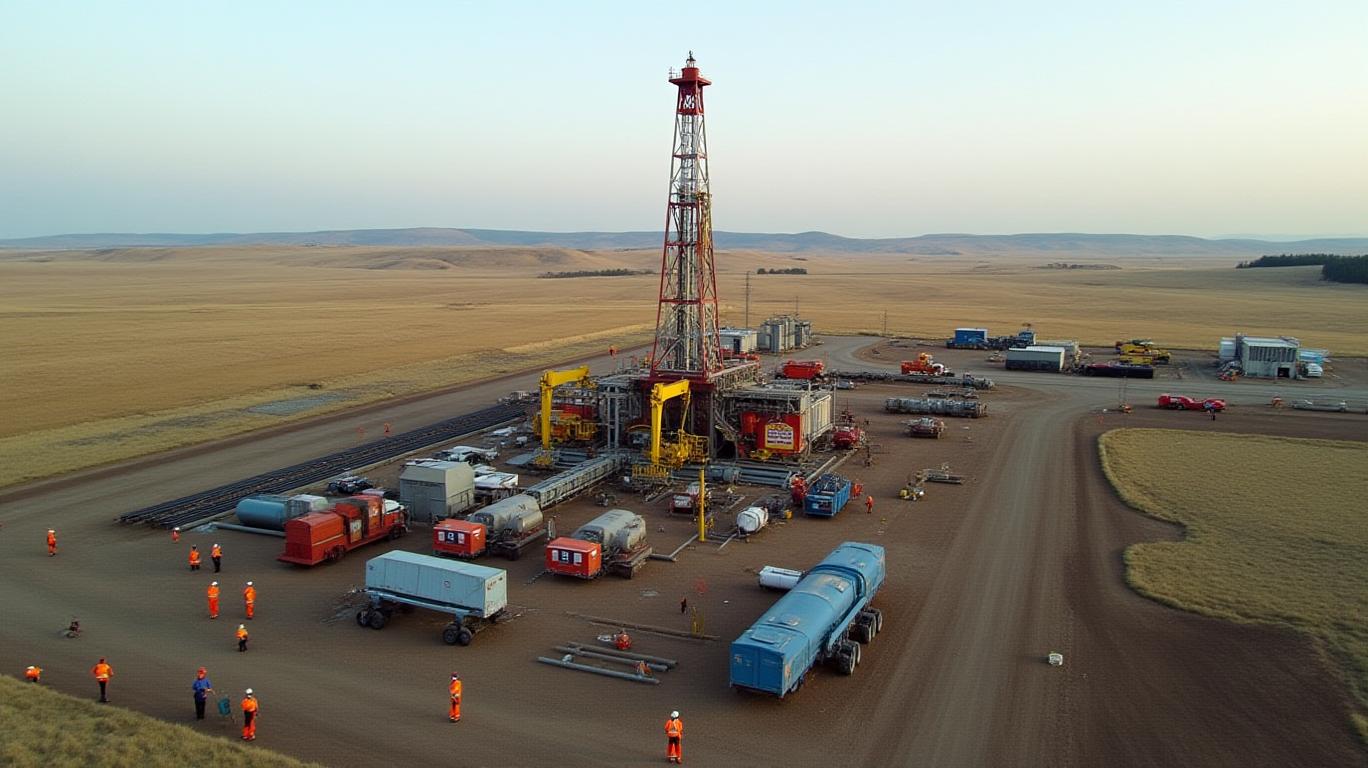Fiddlehead Resources: Navigating Growth Amid Challenges in 2025
Fiddlehead Resources Corp. (TSXV:FHDR) has entered a pivotal phase, as its recent financial results and operational updates highlight both opportunities and risks for investors. The company’s Q4 2024 performance and 2025 plans reveal a balance between aggressive acquisition strategies and the pressures of debt and operational execution. Here’s a deep dive into its prospects.
Financials: A Rocky Start, but Strategic Momentum
Fiddlehead’s Q4 2024 results underscore the challenges of its post-acquisition phase. While production averaged 1,624 barrels of oil equivalent per day (boe/d)—a solid baseline after acquiring the Ferrier assets—the financial picture was less rosy. The net loss surged to $2.295 million, compared to $0.189 million in Q4 2023, driven by higher general and administrative expenses and startup costs. Funds flow from operations turned negative ($73,768), reflecting cash burn rather than generation.
The company’s total long-term debt rose to $12.17 million, signaling a reliance on leverage to fund its growth ambitions. However, management’s focus on value-accretive acquisitions, such as the recent Cynthia Assets deal, suggests a calculated bet on future returns.
Operational Updates: Expansion Through Acquisition
The Cynthia Assets acquisition, announced in April 2025, marks Fiddlehead’s boldest move yet. The $21 million transaction (financed via cash, equity, and a $25 million senior secured debt facility at 12.09% interest) aims to boost reserves and production. Key details:
- Cynthia Assets: Adds 1,514 Mboe (probable reserves) to Fiddlehead’s portfolio, enhancing its 2P reserves to 6,078 Mboe.
- Financing Risks: The high-interest debt underscores the need for rapid operational efficiency gains to service obligations.

Meanwhile, Fiddlehead is awaiting final regulatory approval to assume operatorship of its Ferrier assets. Until then, production remains at 1,460 boe/d, with plans for a drilling campaign once control is secured. This transition is critical to unlocking value, as operatorship allows cost optimization and new well development.
Reserves and Valuation: A Mixed Picture
The reserves report paints a nuanced picture. While proved reserves stood at 4.564 Mboe (a decline from prior years due to no capital spending during the sales process), the 2P reserves of 6.078 Mboe highlight growth potential. The NPV10 (after tax) of proved reserves was $47.1 million, suggesting economic viability at current commodity prices.
However, the company’s reserves have not kept pace with production volumes, a gap the Cynthia deal aims to address. With light oil and natural gas comprising 85% of reserves, Fiddlehead is positioned to benefit from rising demand for these commodities, particularly as Pacific Coast LNG exports gain momentum.
Risks and Challenges
- Debt and Cash Flow: The $25 million debt facility at 12.09% interest raises concerns about cash flow strain. Fiddlehead’s ability to improve its operating netback ($7.84/boe in Q4 2024) will be key to covering interest payments.
- Regulatory Delays: Licensing transfers for Ferrier and Cynthia assets could lag, delaying production optimization and drilling plans.
- Commodity Prices: Natural gas prices remain volatile, with the Q4 2024 average at $1.28/Mcf—near historic lows. A sustained downturn could pressure margins.
Conclusion: A High-Reward, High-Risk Play
Fiddlehead Resources is a high-beta investment, offering significant upside if its strategy succeeds but posing substantial risks. The Cynthia acquisition and Ferrier integration could position it to capitalize on rising LNG demand and Alberta’s oil/gas renaissance. However, its $12.17 million debt load, reliance on external financing, and operational execution risks demand caution.
Investors should monitor two critical metrics:
1. Debt-to-Reserves Ratio: If Fiddlehead’s debt grows faster than its reserves, it could signal overleveraging.
2. Operating Netback Growth: A sustained improvement from $7.84/boe would ease cash flow pressures.
In the current environment, Fiddlehead’s story hinges on execution. For risk-tolerant investors willing to bet on aggressive asset consolidation and a rebound in commodity prices, it could be a rewarding opportunity. For others, the high debt and operational hurdles may justify a wait-and-see approach.
Final Note: As of April 2025, Fiddlehead’s stock trades at CAD $0.20/share, with a market cap of CAD $24.4 million. Its success in 2025 will be measured by whether it can convert its reserves into cash flow—and its debt into growth.
Sign up for free to continue reading
By continuing, I agree to the
Market Data Terms of Service and Privacy Statement

Comments
No comments yet